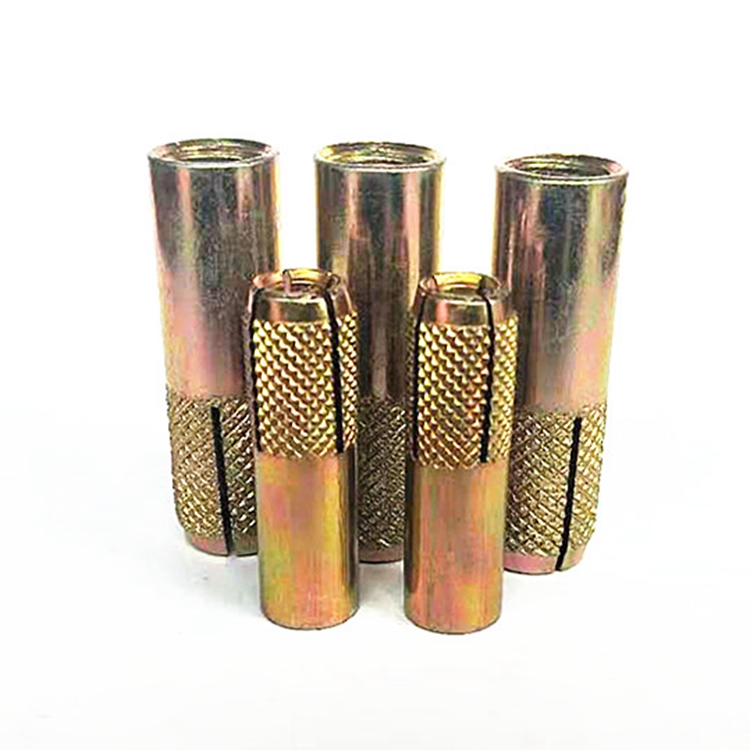Understanding Double-Ended Machine Threaded Studs and Bolts for Various Applications
Nov . 27, 2024 16:38 Back to list
Understanding Double-Ended Machine Threaded Studs and Bolts for Various Applications
Understanding Double Ended Machine Thread Screw Stud Bolts
Double ended machine thread screw stud bolts are an essential component in various engineering and construction applications. These versatile fasteners are characterized by their threaded ends, allowing them to be anchored securely in materials while providing a sturdy and robust connection. Understanding their features, applications, and benefits can aid in selecting the right type of stud bolt for specific needs.
Features of Double Ended Screw Stud Bolts
A double ended screw stud bolt typically consists of a solid, cylindrical body with threads running along both ends. The middle section is often unthreaded, which serves as a central hub. This design allows for multiple types of connections, whether it be fastening two materials or acting as a connecting rod.
The threading on both ends is crucial as it facilitates compatibility with other components such as nuts or even other bolts. The diameters and pitch of the threads can vary, meaning users can choose the right specifications for their applications. Additionally, these fasteners are available in a variety of materials, including stainless steel, carbon steel, and alloys, each selected based on the required strength, corrosion resistance, and environmental factors.
Applications of Double Ended Screw Stud Bolts
Double ended machine thread screw stud bolts find use in numerous industries, including automotive, construction, and manufacturing. One common application is in the assembly of machinery and equipment, where they serve to securely fasten various components together. In the automotive industry, for instance, they might be employed to connect parts of the engine or chassis, ensuring that everything is tightly held in place to withstand vibrations and forces during operation.
In construction, these fasteners are often used to join structural elements like beams, columns, and flooring systems. The ability to easily insert a stud bolt through pre-drilled holes and secure it with nuts makes it a favored choice among builders and engineers.
double ended machine thread screw stud bolt

Apart from traditional uses, innovative applications are emerging, especially with the growth of modular construction and prefabricated assemblies. The ease of disassembly and reassembly offered by double ended screw studs is particularly advantageous for structures that may need to be relocated or modified over time.
Benefits of Using Double Ended Machine Thread Screw Stud Bolts
One of the primary benefits of double ended machine thread screw stud bolts is their versatility. They can be used in a variety of configurations and applications, accommodating different sizes and load requirements. This adaptability often simplifies inventory management, as fewer fastener types may be needed to cover a range of projects.
Moreover, the structural integrity offered by these bolts is notable. The dual threading allows for a strong hold, ensuring that connections can withstand considerable tension and shear forces. Their robust nature also translates to longevity, reducing the frequency of replacements and maintenance, which can be particularly valuable in high-stakes applications.
Another important benefit is the ease of installation. The design allows for quick fastening and disassembly, which can significantly reduce labor time on projects. This efficiency is complemented by the reliability of the connections, providing peace of mind for engineers and builders who require durable and efficient fastening solutions.
Conclusion
In conclusion, double ended machine thread screw stud bolts are critical components in various applications across multiple industries. Their unique design offers versatility, strength, and ease of use, making them a preferred choice for engineers and builders alike. Understanding their features and applications enables users to make informed decisions when selecting the right fastening solutions for their projects, thereby ensuring structural integrity and reliability in their constructions and machinery.
Latest news
-
High-Quality Panel Stud Bolt Reliable Panel Stud Bolt Factory & Suppliers
NewsJul.08,2025
-
High-Precision Fine Thread Locknuts Manufacturer & Supplier Custom Solutions
NewsJul.08,2025
-
PH Imperial Stud Bolt – High Strength Fasteners from Leading Supplier & Factory
NewsJul.07,2025
-
High-Quality Allen Wrench Bolts Leading Factory, Company & Suppliers
NewsJul.07,2025
-
Wholesale Ball Stud Bolt - High Quality Supplier & Factory Price Reliable Wholesale Ball Stud Bolt Company
NewsJul.06,2025
-
High-Strength Alloy Bolts Manufacturer & Supplier Quality Alloy Fasteners Factory
NewsJul.06,2025
